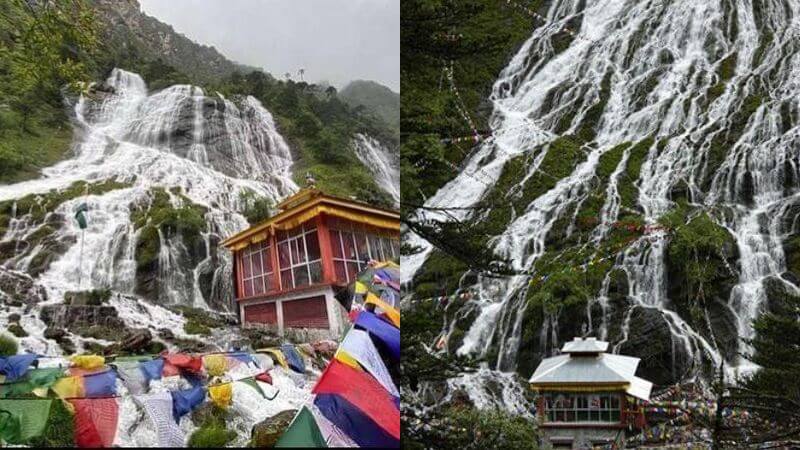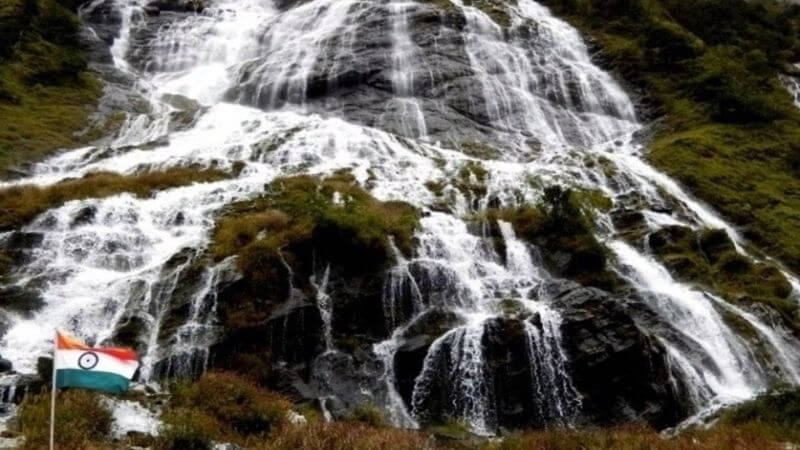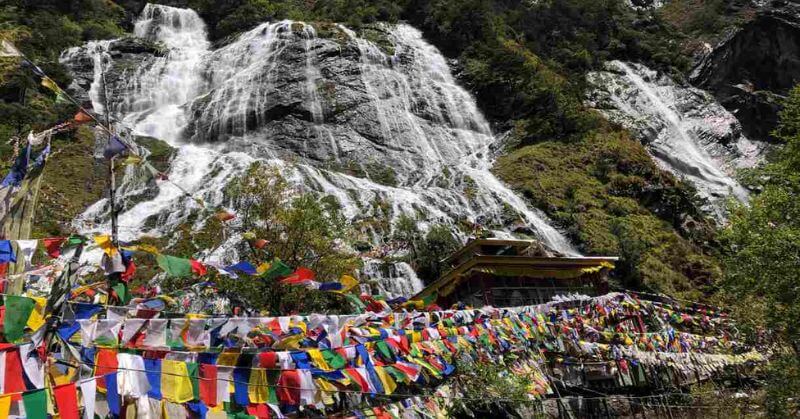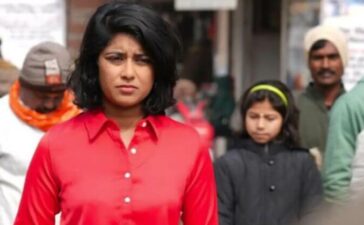Chumi Gyatse, a mesmerizing cluster of 108 waterfalls, is located on the India-China border in Arunachal Pradesh. Domtsang is the Tibetan name for it, whereas Dongzhang is the Chinese name. It’s known as the “Holy Waterfall,” and it descends from an elevation of about 11,500 feet.
Furthermore, the name “Chumi Gyatse” is derived from its features, with “Chu” meaning water, “Mi” denoting holes, and “Gyatse” representing the 108 beads found on a Buddhist rosary or mala.
Why Chumi Gyatse Is Considered ‘Holy?’
Repost via @thewanderingpatronus
One of the most awe-inspiring sights in Arunachal Pradesh is the little-known Chumi Gyatse Falls, colloquially referred to as the ‘Holy Waterfalls’ — a collection of 108 waterfalls on the India-China border.#tawang #arunachalpradeshtourism pic.twitter.com/LnQnm6Apgp
— Arunachal Tourism (@ArunachalTsm) May 3, 2023
According to Monpas’ beliefs, the water pouring from this waterfall is regarded as ‘Amrit’ or nectar. They believe that drinking this water has therapeutic properties and can cure illnesses that affect them and their loved ones.
Furthermore, married couples who drink from the waterfall’s waters are said to be blessed with the gift of offspring. These deeply held beliefs have produced a practice among the Monpas of seeking the waterfall’s water for its claim to revitalize fertility-enhancing properties.
Folklore

The beautiful Chumi Gyatse waterfall is surrounded by several folklore, one of which focuses on Padmasambhava, worshipped as the “Second Buddha” by Tibetan Buddhists.
According to legend, Padmasambhava hurled his rosary, which included 108 beads. It struck the rocks, causing the 108 waterfalls to form. Furthermore, another story is that Padmasambhava built the falls in response to local inhabitants’ pleas for respite from a severe plague that had plagued the region. According to legend, the sick natives were miraculously healed of the disease by drinking water from the falls.
Moreover, these compelling stories add to Chumi Gyatse’s mystique and spiritual significance, increasing its attractiveness among residents and visitors alike.
Developing The Area

In 2020, the Arunachal Pradesh government, in partnership with the Army, began construction efforts near Chumi Gyatse Falls. Moreover, it is a site treasured by Tibetan Buddhists and the local Monpa community on both sides of the border. The Monpas, one of Arunachal Pradesh’s most important tribes, are largely found in the districts of Tawang and West Kameng.
Construction of roads leading to the isolated Tsechu village, located near the Line of Actual Control (LAC) where Chumi Gyatse Falls is located, was conducted as part of the development activities. In addition, Pema Khandu, the Chief Minister of Arunachal Pradesh, took the initiative in 2019-20 to build a gompa (Buddhist prayer hall) in the area.
A statue of Guru Padmasambhava, a respected figure in Tibetan Buddhism, was also placed, symbolizing the region’s spiritual significance.
These development efforts reflect the acknowledgment of Chumi Gyatse Falls’ cultural and religious significance. It aims to improve infrastructure and facilities for visitors and devotees.
Located On The Indo-China Border
The Chumi Gyatse waterfall, according to an ANI article from December 2022, provides as a remarkable representation of the contrasting realities on either side of the international border.
On the Indian side of the border, where the waterfall runs smoothly down brilliant green mountains, there is a sense of tranquility and contact among people. However, the Chinese side is a lonely area marked by a lone Chinese border station. There is a painting of Xi Jinping (China’s President), and CCTV cameras for surveillance.
In addition, the Indian government proposed allowing Tibetan pilgrims to visit the Holy Waterfalls. However, no authorization was obtained by the Chinese side, showing that Tibetan pilgrims had limited access to this renowned destination.
There are contrasting situations on either side of the border. It emphasizes the complicated dynamics and disparities in policies between India and China. It is regarding pilgrimage and cultural significance linked with this hallowed spot.
According to Tsering Wangdu Shakya, a Tibetan literature historian and academic, there have been no documented disputes or conflicts created by Chinese authorities in Chumi Gyatse.
Follow Us: Facebook | Instagram | Twitter |
Youtube | Pinterest | Google News |
Entertales is on YouTube; click here to subscribe for the latest videos and updates.














